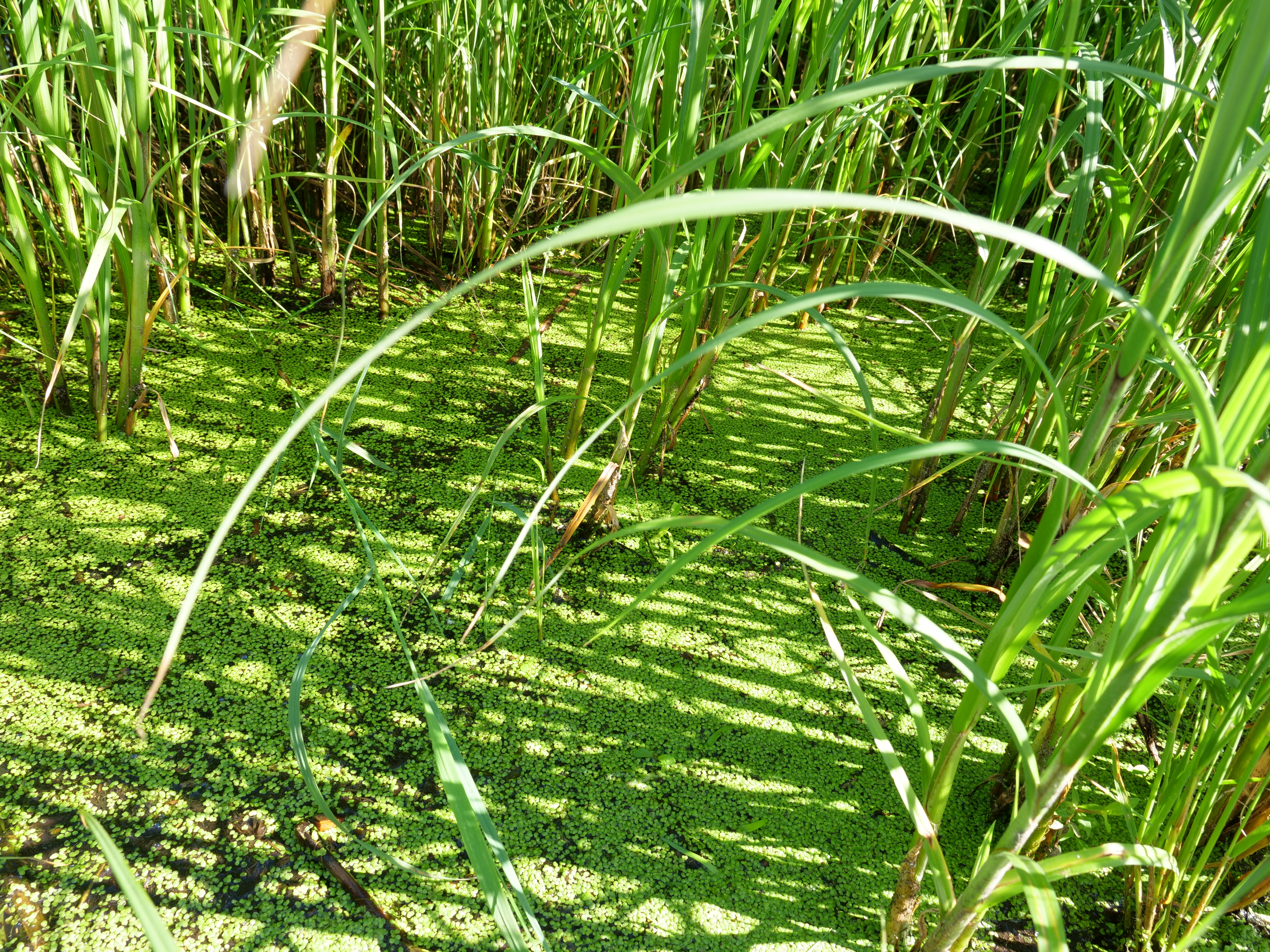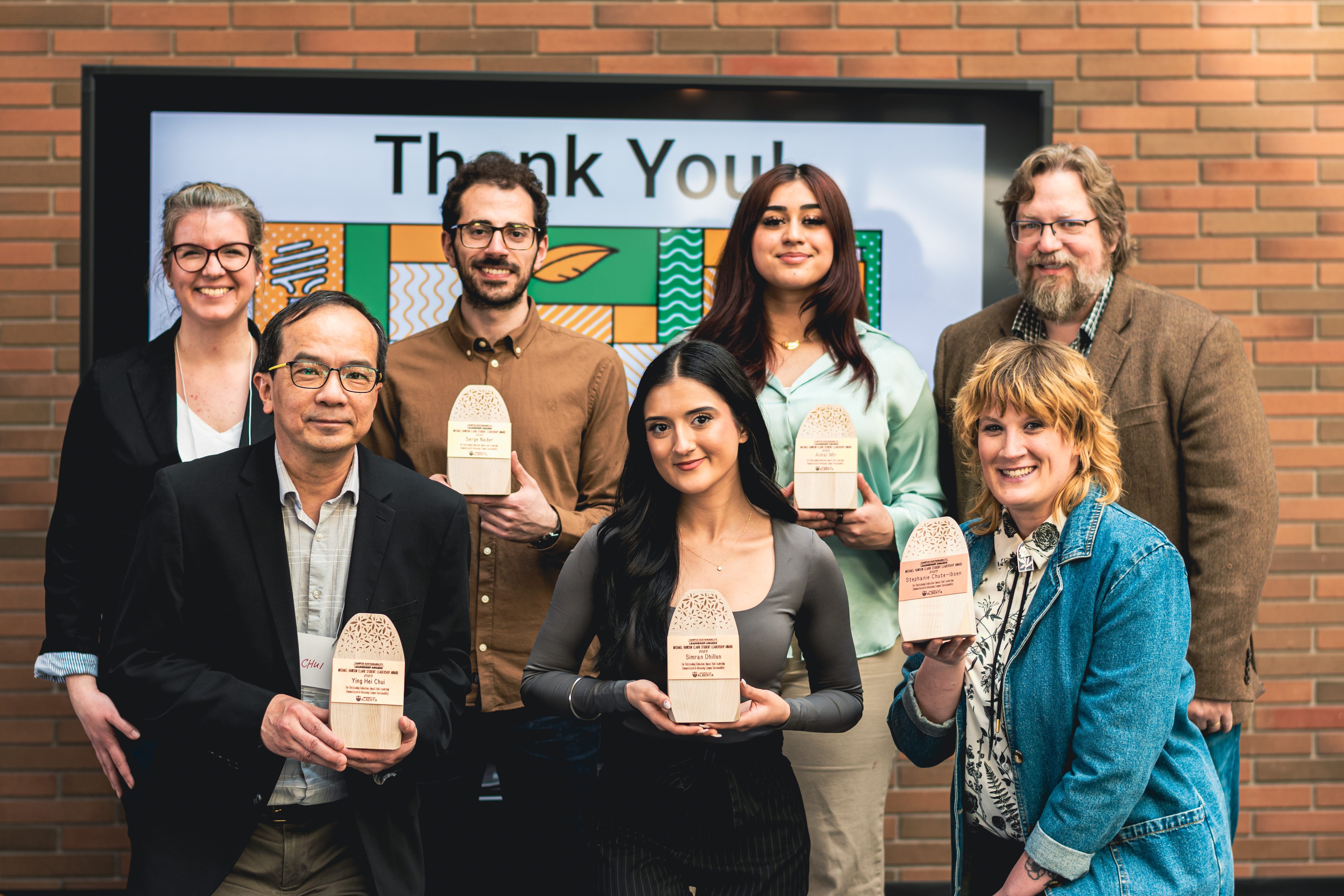Keeping Alberta secure in a climate-changed future
It’s too late to completely reverse climate change. Alberta must prepare for a future of severe heat waves, droughts, floods, fires, storms, and other consequences provoked by our unsustainable use of Earth’s natural resources. However, if we act now, we can prevent some of the worst outcomes from natural disasters and shifts in current weather and temperature patterns.
The Adaptation Resilience Training (ART) program pairs recent university graduates with organizations looking to bolster our climate change defence strategy.
Here are three ART interns working on the front lines, strengthening Alberta’s response to the climate crisis.
Mapping Calgary’s climate risk

Sonak Patel
Neighbourhoods that are close enough to share a postal code won’t experience shockwaves from the climate crisis with equal intensity.
A street lined with trees offers more shade to keep yards and sidewalks cool on hot days than one without. A block filled with plants will resist flooding more easily than one made almost entirely of concrete. A community with older residents, who are more likely to suffer from heat strokes, dehydration and death in extreme temperatures, will struggle more than parts of a city with younger residents.
These uneven climate change impacts are what the City of Calgary wanted to explore when it hired MSc in Risk and Community Resilience graduate Sonak Patel as a project assistant for its Climate Adaptation team.
“My project is working on community climate risk profiles,” Patel said. “We have an index of the roughly 300 communities in Calgary with a dashboard of different indicators that estimate each community’s unique climate risk. I combine that work with urban heat island analysis, natural asset mapping and some equity indicators to detail specific drivers of climate risk and quantify what that risk is.”
Sonak and his colleagues investigate differences in demographics, infrastructure health, and natural infrastructure, such as trees and other vegetation, across Calgary’s communities. By understanding which areas need the most attention, they can prepare Calgary’s neighbourhoods for heat waves, droughts, floods, and other looming environmental crises.
“The reason I think this work is critical is that we have limited time to address climate change, and I think we also have pretty limited resources,” Sonak said. “In a hypothetical community, if stormwater flooding isn’t a huge impact, but extreme heat is, then with a limited amount of budget, we should be focusing on providing shading to spaces and providing access to drinking water. If we took a very broad approach and tried to deal with all hazards at the same time, we’d quickly run out of resources to be able to do so.”
Sonak said that his biggest learning experiences since joining the City of Calgary have been understanding how quickly climate change strategies are evolving, and how much the impacts of climate change will vary between different groups of people due to factors such as access to climate resilience resources, information, and supports, and the physical condition of different neighbourhoods.
“This is going to be the challenge of multiple generations,” he said. “If there’s something important I’m going to do in my life, it’s going to be related to this issue. And getting into adaptation has been very eye-opening. Even in the best-case scenario, we will experience dramatic changes. We need to be prepared for them, and in many ways, we are not prepared.”
Building green in Okotoks

Taylor Tulissi
A 2018 greenhouse gas inventory for the southern Alberta town of Okotoks found that 45 per cent of the community’s greenhouse gas emissions came from buildings.
Although all new municipal buildings in Okotoks are certified LEED Gold—the second highest grade given by the world’s most widely used green building rating system—new, single family detached homes do not have to meet any environmental standard.
That’s why, when the town created its climate action plan, it knew that future homes would have to be more energy efficient, less of a drain on other valuable resources such as water, and able to withstand the extreme weather and temperature changes we are beginning to see worldwide.
The community hired ART intern Taylor Tulissi to help make Okotoks homes more sustainable and climate secure.
“I’ve lived in Okotoks for most of my life, so it’s cool that I’ve been able to work here,” said Tulissi, a recent Bachelor of Science in Environmental Science graduate who studied at the University of British Columbia. “My main job was to design green building standards for the town’s future development, so I’ve researched how other municipalities have implemented green building guidelines and worked to understand what Okotoks wants to get out of the guidelines.”
Tulissi found that some home builders in the community had already adopted third party green building programs, and suggested that a first step could be to encourage other developers in the community to follow these builders’ lead. She also ranked the green building guidelines of municipalities around Canada based on how well they would work for Okotoks. The Town of Whitby in Southern Ontario came in first place, so Tulissi met with the project manager behind Whitby’s guidelines to see how they could be adopted by Okotoks.
“To meet climate goals, we have to collaborate, not compete,” she said.
The town of Okotoks aims to implement the green building standards by 2033, but Tulissi said that it could have them in place well before that year.
“People are interested in sustainability here; people love to be part of the change,” she said. “You’d think that’s kind of opposite from a small town in southern Alberta, but there is an open mindedness here. And something as big as green building guidelines, I think everyone is on the same page, and we can frame it in a way that we’re helping the community, residents, and industry.”
Although Tulissi may be gone from her position with the town by the time the building guidelines are in place, she said she feels as though her work has made a difference.
“The guidelines might not be specifically how I suggested them, but I know the research I did has been super helpful for envisioning how they could work.”
Saving trees and saving money in Edmonton

Natural spaces, with trees, grass, ponds and other green features, improve the aesthetic of urban environments, but they are more than just decoration. They provide a barrier against flooding, shade from heat, and habitat for urban wildlife, and they store carbon dioxide, slowing down climate change.
On top of these important ecological functions, green spaces also save cities money.
How much money? That’s what Jayranjan Omranjan Maurya, a second-year Master of Science in Mechanical Engineering student, has been trying to calculate for the City of Edmonton.
“We generated a dollar value for natural assets in the city, like trees, grasslands, water bodies and wetlands,” Maurya said. “Then we created a model that shows you how much money you lose if you cut down, for example, one tree, or remove a forest or grassland.”
Green spaces save cities money by reducing the need to build flood-preventing infrastructure, keeping air conditioning costs lower, and lowering costs associated with carbon taxes and protecting endangered species.
But removing green spaces can make cities money too. Mowing down a forest creates room for new residential and business developments, and cities can harvest natural resources on urban land.
So is it worth it to keep removing nature in and around Edmonton?
Not after 2025, according to Maurya. In three years, adjusting for inflation and factoring in the carbon pricing, the city will lose money every time it removes green space to make room for development.
“If we clear one hectare of forest it will take 6.2 years to make up the value that we lost in one year by cutting that forest down,” Maurya said.
“Our economy is based on infrastructure. We cannot just eliminate all the buildings and plant trees, but if you don’t want to increase the cost, if you don’t want to reduce the lifestyle of humans and different components of our environment, then a balance is needed.”
Maurya thinks that if the city maintains its current green space coverage, whether by converting more areas into green space or by not allowing new developments to be built on natural land, it can avoid the growing costs of removing forests, grasslands and wetlands.
“I think my work will be useful to prove the value of these natural assets,” Maurya said. “Policies can be built with these numbers in mind.”



